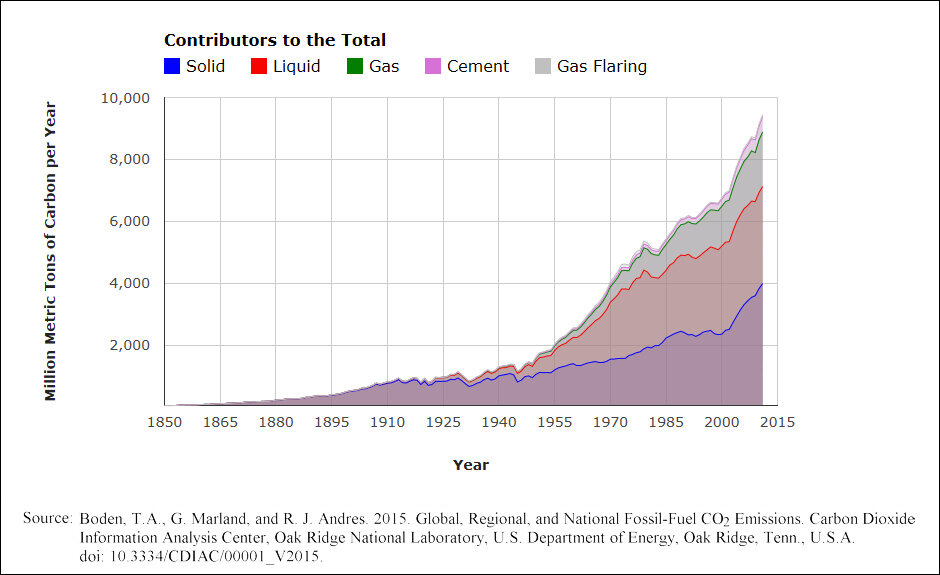How do we know that climate change is happening?
Image Source: here
Average Global Temperatures Are Increasing
According to research by NASA and other agencies, the globe’s average surface temperature has risen by about 2.05 degrees Fahrenheit since the late 1800s. The graph above shows this temperature rise.
Image Source: here
Global Glacier Volume is Shrinking
The world’s polar ice sheets and glaciers are melting because of rising temperatures. According to NOAA, glacial melting has been accelerating over the past decade. This is important because it impacts sea level rise, the habitats of flora and fauna, and nutrient availability in marine ecosystems.
Image Source: here
Global Mean Sea level is Rising
When water is heated it expands. As ocean water warms this property causes sea levels to rise. According to NOAA, most sea level rise is due to this warming. Glaciers melting also contribute to sea level rise. Currently, sea level rise is monitored around the globe using satellites like the Sentinel-6 Michael Freilich mission.
What is causing climate change?
Image Source: here
The Amount of Carbon Dioxide in the Atmosphere is Increasing
The concentration of carbon dioxide in the atmosphere is higher than at any point in the last 800,000 years. Since Eunice Foote’s discovery in the 1850s, we have known that carbon dioxide is excellent at trapping and holding heat from the sun. This excess heat trapping power is what is causing the earth to warm. Also, carbon dioxide is not alone, there are also other heat trapping molecules such as methane, water vapor, and nitrous oxide.
Image Source: here
Humans Release Billions of Tons of Carbon Dioxide Every Year
According to the EPA, human caused carbon dioxide emissions have risen by 90% since 1970. Most of these emissions come from burning fossil fuels and from industry. However, contributions from agricultural practices and deforestation are also significant.
Image Source: here
Natural Climate Variation Does Not Account for Measured Warming
According to NASA, the amount of energy that the earth is receiving from the sun has remained nearly constant and cannot account for the observed warming of the lower atmosphere. The warming is due to greenhouse gases like carbon dioxide.
What impacts will climate change have on the globe?
Hurricane Isabel: NASA
Increasingly Severe Weather and Natural Disasters
According to the USGS and NASA, we expect increasing intensity of tropical storms, as well as rising sea levels, and changes in wave heights. This will contribute to the destruction of infrastructure during extreme events and coastal erosion. Additionally, some areas of the United States, in particular the West, will experience an increase in wildfires and heat waves. Other areas, such as the Midwest, may experience increased flooding.
Drought in Texas: Bob Nichols, USDA
Decreasing Food and Water Security
According to a recent report by the Food and Agriculture Organization of the United Nations, warming generally helps the survival and spread of unwanted crop pests including insects, pathogens, and weeds. In some regions, this will increase the risk of severe impacts on crops used for both food and animal feed. Additionally, according to the Intergovernmental Panel on Climate Change (IPCC) Synthesis Report there is projected to be less renewable surface water and groundwater resources available in some regions. This will lead to increasing ill-health and competition, particularly in developing countries.
Coral Bleaching: AIMS
Environmental Degradation
According to the Australian Institute of Marine Science and the IPCC Synthesis Report, rising ocean temperatures and corresponding ocean acidification are negatively impacting marine ecosystems. One consequence is wide scale coral bleaching, which is occurring with increased frequency. A large percentage of marine and terrestrial species are at an increased risk of extinction due to many climate change driven stressors. As an example, most plant species cannot naturally alter their geographic range fast enough to keep up with expected warming temperatures.








